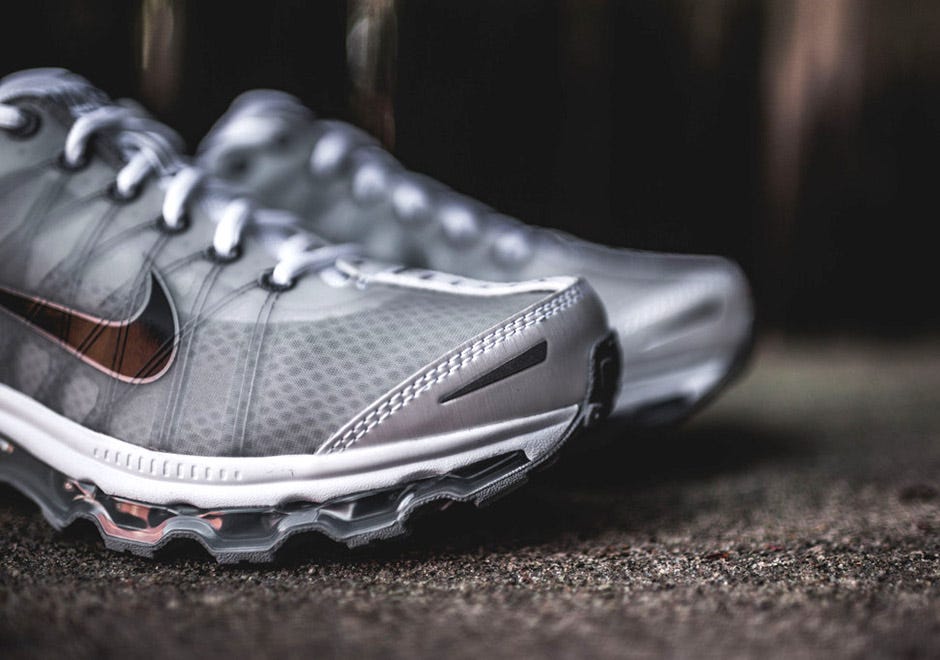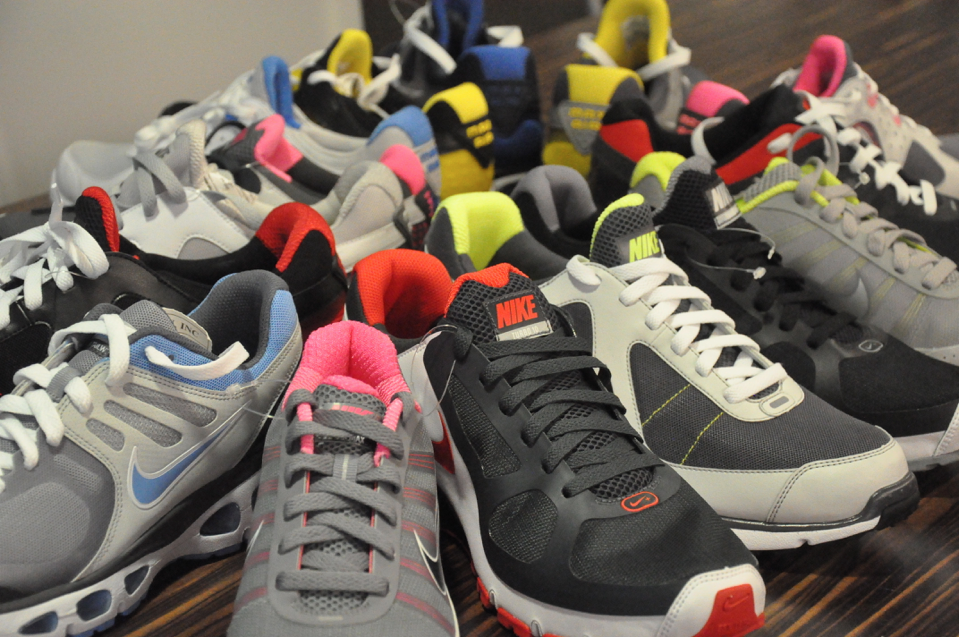
I Hate Running
My father was an amazing athlete. After running for the legendary track coach David Albritton he ran for the University of Michigan. After college he utilized sport as a way to stay healthy and connect to his children.
His main hobby was running. Every Sunday he would throw on his New Balance held together with ShoeGoo, grab his mace and small stick to fight off stray dogs and go for a 3-mile run.
That was crazy to me.
So I chalked it up to another reason why my father and I never connected.
I played basketball. Not good enough for the University of Michigan, but good enough to win back-to-back intramural championships at Georgia Tech. Even then, I can’t take much credit. Neal Christian and Rod Lucas had a few ringers from the football squad like Dorsey Levens, Harvey Middleton, Derrick Shepard and Carlos Smith. The games weren’t close.
Fast-forward a few years later and I’m in the dream job of designing sneakers for every category at Nike while living in Tokyo. My first projects were in basketball, but other category teams thought I could add value so they threw projects my way. I did some NSW and some Nike SB. I did some women’s training and some kids. All good.
Then Matt Holmes asked me to help the running team with the Nike Katana series. The Katana were racing flats designed specifically for the Japanese runner that were slightly wider with a lower profile — based on cultural preference, gait analysis and foot morphology. Over the next 12 months I worked with the Japanese Marketing team to develop a shoe for their market — the Katana Racer 3. Leo Chang taught me everything he knew about the product and stole a few rendering tricks along the way. The shoe performed well at that year’s Ekiden and won gold in the 2008 Olympic Marathon.


Not so bad.
But after three years, my dream would come to an end. My manager in Beaverton, Sergio Lozano, explained that I had a lot of options, but the category that really wanted me was Running.
“Not interested,” I told Sergio.
“Why? They loved your work on the Katana,” Sergio responded.
“That was in Japan,” I answered. “The real Running team makes boring shoes and I can’t see myself ONLY working on technical shoes with no style.”
In the late ‘90’s and early 2000’s Nike had lost it’s way in the Running market. For years they were printing money with shoes that didn’t hold up to the expectations of performance runners that read Runner’s World and used Shoe Goo. Asics and Mizuno were ‘real’ running shoes. Nike was a poser. That was in stark contrast to Nike’s roots that was always about ‘real’ runners. Unfortunately, in the consumer’s eyes the technology and marketing took over.
As legend has it, Mark Parker noticed that all of the kids on his daughter’s cross-country team took off their cool Nikes before the race to put on their ‘real’ running shoes during the race. So the pivot to developing ‘real’ running shoes was made in the form of Nike Bowerman.
Named after Phil Knight’s legendary track coach, the Bowerman line started as Nike’s take on performance running, but slowly developed into styles that very much resembled Asics & Mizuno. This was somewhat odd considering Bowerman spent his life breaking rules with respect to how footwear and running were perceived. I spent the better part of my time in Tokyo convincing the Japanese office that we didn’t have to build copies of the Japanese brands. I wasn’t interested in having that same conversation in Beaverton, Oregon.

To be honest, I also had little interest in joining a team of mostly white, male runners. From marketing to development, this was a team that felt the most like the Oregon that wasn’t comforting to me. That was not a molehill. That was a mountain. Understanding intersectionality was not the specialty of Nike Running.
In Japan, we knew three other black families — one from Chicago, one from Los Angeles and one from Ghana. We stood out like sore thumbs, but we were treated differently from our white counterparts.
“The Japanese will either treat you as lesser than or respect you as better than,” Daniel Mensa, our banker friend from Ghana would often explain to us Americans. Daniel’s point was that the Japanese either learned from their white friend’s or media that they could dismiss black and brown people OR they understood that the Japanese themselves were also being treated as lesser — so they respected African-Americans that found their way into Japan in the business world.
Three years of that level of respect and honesty were about to be traded for the alien looks that we’d learned to ignore in Oregon — though we’d live in the most diverse neighborhood in the state thanks to the large tech influx. The school was so amazing that it overcrowded. 42% Asian. True story.
Nike Running. Not so much.
But I was more concerned about the expectations on the product I would be designing. I loved the technical aspect, but the ‘real’ runner baggage was a ‘reason not to buy’.
So the thoughtful & understanding Sergio Lozano passed me onto to the impatient & demanding New Zealander — Matt Holmes. I loved working with Matt — the Design Director — but I didn’t want to work in Running. I told him that I wouldn’t fit into the Running category because I would design shoes that didn’t vibe with the new narrative they were building.
“Then tell us what you would do,” Matt requests.
So I put together a simple deck of who I wanted to design running shoes for.

In almost every sport, running is used as a punishment. In high school, we had pro-sprints (run the full length of the court and back) or we ran the poorly-titled-but-vaguely-accurate ‘suicides’ (run four different sets of line on the court). While the coaches knew we needed cardio, they also used running as a way to persuade better judgement.
Late to practice.
Run.
Miss a free throw.
Run.
Shoes untied.
Run.
Forget a play.
Run.
But, like broccoli, running is good for you. So I compared running to medicine. So I referred to those geriatric running shoes (the type that would become stylish by 2015) as looking ‘medicinal’. Athletes didn’t want to run. And if they did, they didn’t want to look like ‘real’ runners.
While I trusted that such an offensive declaration (explicit: I hate running; implicit: runners aren’t athletes) would keep me out of the foundation of the Nike brand, I added a periodt by scripting a commercial starring Rio Ferdinand (because I really wanted to work in Soccer).






I patiently waited for Matt to get back to me with a mutual exclusively ‘no thanks’, but you know that’s not what happened.
“The team can’t wait for you to get here,” Matt explains to me over the phone. “You’ll love it!”
I was not excited, but I needed a category to return to in Beaverton, so I decided that I was going to ‘hate running’ from the inside.
However, in order to break the rules, you have to learn the rules first.
So I immediately dove head first into a Bowerman project with John Hlavacs. John was the senior designer and gatekeeper of all things Bowerman Running Design. He had design templates and material books that defined what made those running shoes tick.
I memorized everything from Mens Size 10 lateral collar height to foam hardness below the cuboid. While he designed the Mens Structure Triax+ 12, I designed the Womens. John is an amazing teacher. Straight medicine.
The reality was that I wasn’t the only person that disliked applying the Asics/Mizuno aesthetic to Nike product. Over the next year the team had a revolt through product design and marketing that lead to new takes on Nike Running. Gone were the overtly technical product without performance and gone were the ‘medicinal’ product that reflected brands outside of the Berm. We pushed for materials, technologies, colors and aesthetics that were far from the Runner’s World norm. Lead by Andreas Harlow, we changed the landscape of Nike Running and the larger running world.
Sebastien Mermet & Ernest Kim delivered the LunarGlide.
Kasey Jarvis evolved Nike Free while pushing everyone on just about every project.
I worked with Cubby Golden and Rob Williams to reinvent the Air Max series.



“I Hate Running” became focus groups lead by Todd Lewis. In Dallas we toured training facilities for four days and never visited a traditional running retailer. We wanted real feedback from runners that didn’t know what splits were. We wanted to hear how they approached running. We wanted to understand what would make their ‘medicine’ taste better. We wanted teenage boys and girls to tell us what they wanted. We wanted to see what they were wearing.

Eventually those conversations escalated beyond product. Even the brand team joined the conversation.


We developed colors and stories that weren’t driven by Footlocker or Runner’s World. We built a Nike story that every athlete could feel comfortable wearing — even ‘real’ runners. We kept things simple. We kept things bold.



All in all the Running category was filled with the most talent and experience I have had the pleasure of working with. From the full design team — color, graphics and materials — to development and engineering, the team was unbelievable. That makes sense given the size of the business, a detail obsessed consumer and relationship to the brand.
So while I still hate running, I learned to love Running.
On a perfect morning with no dogs in site, you might even find me going for a run.
Thanks Dad.
Good things.

